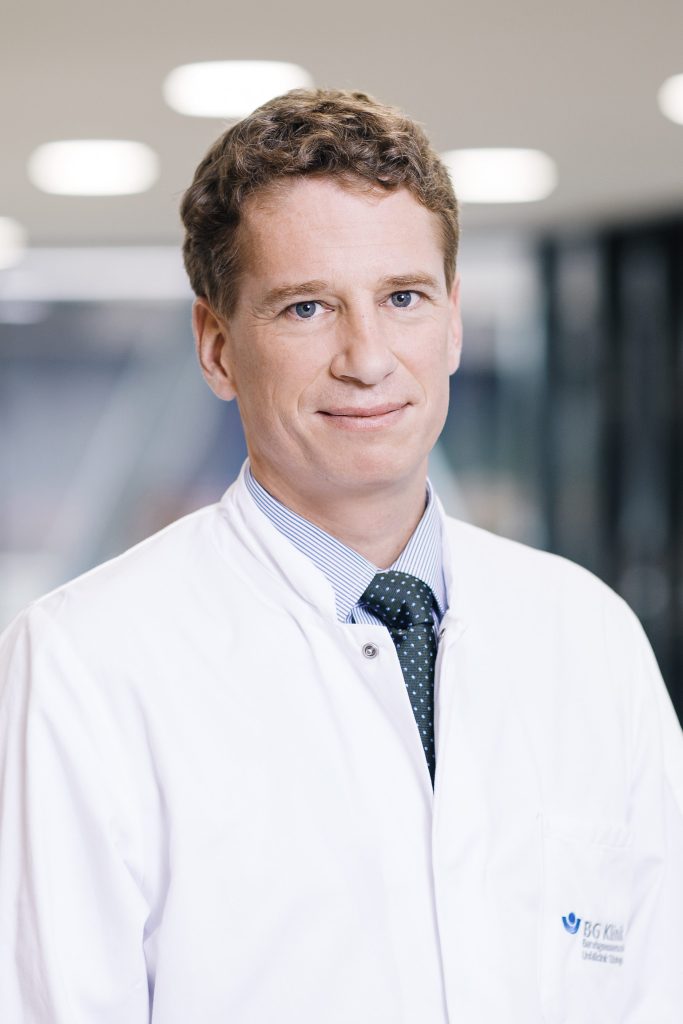Series: Healthcare experts at SHS

SHS enjoys a very good reputation as a specialised medtech investor among companies and institutional investors because we draw on a strong network of experts. The medical-technical healthcare experts who support SHS and the portfolio companies play a special role. We would like to introduce you to some of our healthcare experts in short interviews in the next issues of our newsletter.
Professor Dr Adrien Daigeler (47) has been Director of the Clinic for Hand, Plastic, Reconstructive and Burn Surgery at the Berufsgenossenschaftliche Klinik Tübingen since 2017. Professor Daigeler studied medicine in Würzburg and is a specialist in plastic and aesthetic surgery, hand surgery and intensive care medicine. Before coming to Tübingen, he worked at BG Klinikum Bochum and BG Klinik Ludwigshafen in leading positions in the field of hand, plastic, reconstructive and burn surgery.
Editor: Where do you see the greatest progress in your field in recent years?
Prof. Daigeler: We have seen great progress in microsurgery in recent years, mainly due to better instruments and better microscopes. We can reconstruct much smaller things nowadays. We can also suture lymph vessels and blood vessels that are smaller than 1 mm well. In addition, there are also advances in our field in the area of robotics, augmented reality and 3D representations or even approaches to solutions for tremor compensation. A lot has already happened here and a lot will happen in the future. Very helpful for tissue transplants are imaging methods with cameras above the patient, which show the surgeon during the operation, for example, which areas of a tissue are well supplied with blood and which are not. A great innovation in the field of burns is Nexobrid®, an enzyme-based drug made from the bark of the pineapple tree. For us, this is almost a miracle drug because it can accurately distinguish the dead, burnt tissue from the healthy tissue in patients with deep thermal injuries. The dead tissue can thus be separated from the healthy tissue by a hair’s breadth.
What developments do you expect in the next five to ten years?
In our discipline, I expect further advances in robotics, microscopy and augmented reality. In addition, there will be further developments in intraoperative navigation aids, where, for example, tumour borders can be projected onto the patient. There are already prototypes, but it will take time before such systems go into series production. That is incredibly expensive, and then there must also be a market for these devices.
Where would you like to see more support from medtech companies?
It would be good if the robots became cheaper. In view of the tight financial situation in the hospitals, these systems are simply still far too expensive to become widely accepted. In addition, studies have shown that these systems are not really superior to human surgeons. If you ask me, I prefer to stand at the operating table and work directly on the patient. Which doesn’t mean that there aren’t niche applications where a surgical robot is really good. But, as I said, it also has to pay off.
How do you contribute your knowledge as a healthcare expert to SHS?
My goal is to contribute my experience and knowledge in such a way that medical technology companies do not develop products that nobody needs. On the other hand, there are sometimes good product approaches that lack one or two decisive features so that the product can be successful. I would like the development engineers to get us practitioners from the hospitals on board earlier so that the products can really do what we need in the operating theatre, for example. Our advice can be given via questionnaires or telephone interviews or even personally in workshops with the developers. It seems important to me that medtech products are not developed without taking the market into account, as development work is far too expensive for that.
Thank you for the interview!